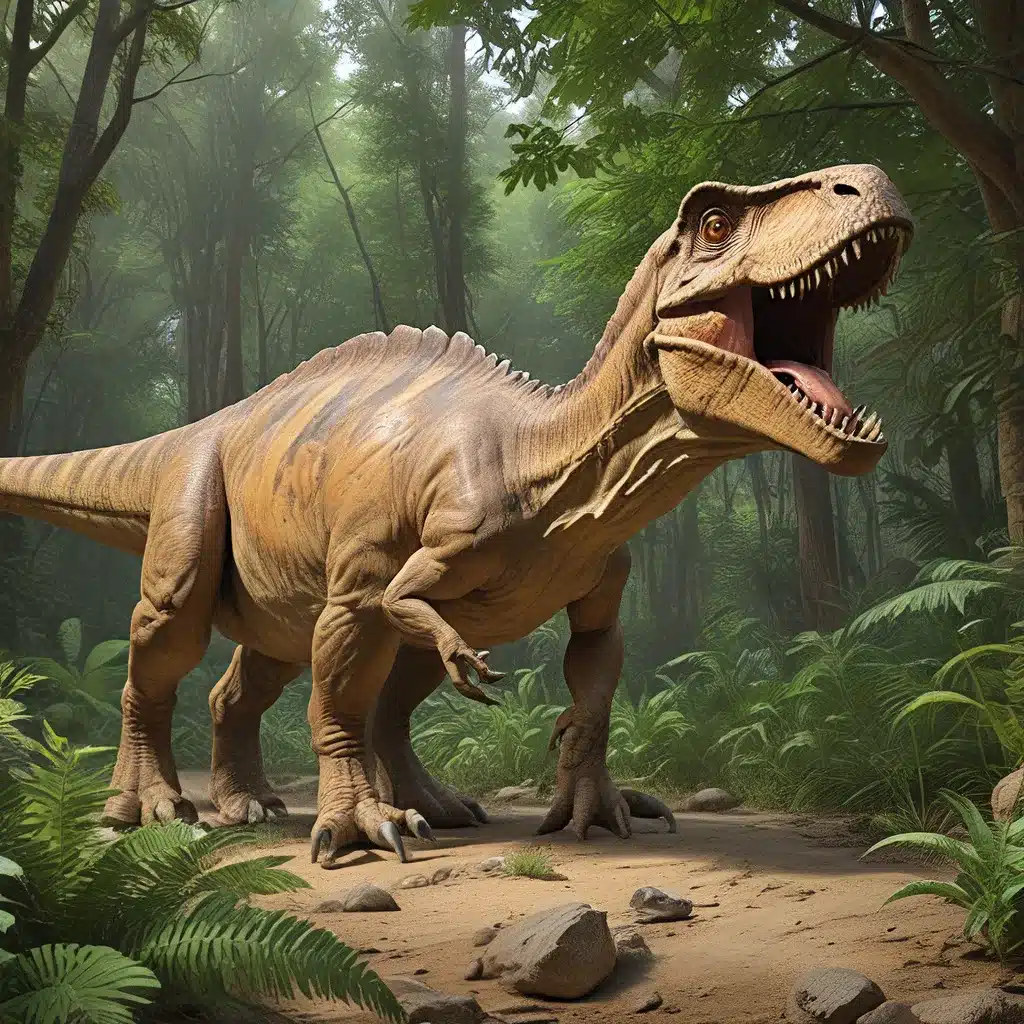
Unraveling the Mysteries of Dinosaur Eggshells
The discovery of Pseudogeckoolithus, a peculiar type of fossil eggshells, has long puzzled paleontologists in Europe. These thin, node-like ornamented eggshells, found across southern Europe and North Africa, bore a striking resemblance to the shells of modern gecko lizards. This similarity led many experts to believe that these fossils were evidence of ancient gecko-like lizards inhabiting the tropical Cretaceous archipelago that once covered the region.
However, a recent international research team, led by Seung Choi from the Seoul National University and including Zoltán Csiki-Sava from the University of Bucharest, has finally solved the Pseudogeckoolithus enigma. Using a novel Electron Backscatter Diffraction (EBSD) analysis technique, the researchers were able to determine that these eggshells did not, in fact, belong to ancient geckos. Instead, the crystallographic pattern of Pseudogeckoolithus eggshells matched that of the eggshells of birds and their dinosaur ancestors, the maniraptorans, which include the fearsome Velociraptor.
“Pseudogeckoolithus eggshells are so thin and fragile that it is often difficult to recognize pristine fragments that preserve all the features typical to theropod eggshells,” explains Miguel Moreno-Azanza from the Universidade Nova de Lisboa and Museu de Lourinhã. “Nevertheless, EBSD allowed us to identify these structures even in the less well-preserved specimens, confirming that Pseudogeckoolithus is not a true gecko eggshell.”
Widespread Small Predatory Dinosaurs
The widespread distribution of Pseudogeckoolithus eggshells across Europe during the Late Cretaceous suggests that small, likely related bird-like predatory dinosaurs were abundant throughout the continent’s tropical island archipelago, even though their body fossils are relatively rare.
“It is remarkable how widespread the Pseudogeckoolithus-type eggshells are,” says Zoltán Csiki-Sava from the University of Bucharest. “They turn up practically everywhere in the Late Cretaceous archipelago, regardless of geographic position, sedimentary environment, or age of the rocks. Now, based on the abundance of their eggshells, we can envision the large number of small feathered predatory dinosaurs that roamed these tropical islands, even when their body fossils are very rare or even completely absent.”
The researchers also note that the Pseudogeckoolithus eggshells share several features with the eggshells of modern megapode birds, which do not brood their eggs but rather bury them in mounds of vegetation and decaying matter. These similarities, such as the thin eggshell, funnel-like breathing canals, and node-like ornamentation, suggest that the Pseudogeckoolithus eggs were likely buried in a similar fashion, with the parent dinosaurs being larger than a crow but smaller than a chicken.
Cretaceous Resin Enigma
While the Pseudogeckoolithus mystery has been solved, another paleontological puzzle remains: the abundance of amber found in Cretaceous rocks. Amber, the fossilized resin from ancient coniferous forests, provides a unique window into the ecosystems and organisms that existed during the Cretaceous period, which spanned from 145.5 to 66 million years ago.
According to Xavier Delclòs, a professor at the University of Barcelona, and Enrique Peñalver, a researcher at the Geological and Mining Institute of Spain, the mass production of resin during the Cretaceous, which led to the formation of these large amber deposits, is a mystery. “For about 54 million years and for the first time in Earth’s history, there was a mass production of resin by plants, and we still don’t know why,” they state.
The researchers have dubbed this period the “Cretaceous Resinous Interval” (CREI), a time when certain groups of conifers were able to originate large deposits of fossil resin that “open a real window to the ecosystems of the past and today provide very important paleobiological information.”
Environmental and Biological Factors
The researchers suggest that the widespread distribution of coniferous forests across the planet during the Cretaceous, along with specific environmental conditions, such as subtropical and temperate paleoclimates and transitional sedimentary environments, contributed to the mass production of resin and the subsequent formation of these extensive amber deposits.
“The environmental factors conditioned the life and evolution of the organisms that existed on the planet, especially the terrestrial ones from the smallest to the great dinosaurs and the relationships between the different species,” explain Delclòs and Peñalver.
Additionally, the high levels of carbon dioxide (CO2) and oxygen (O2) in the Cretaceous atmosphere, along with the intense volcanism of the time, may have also played a role in enhancing the resin production by the coniferous forests.
A Window into the Cretaceous World
The abundance of amber from the Cretaceous period provides paleontologists with a unique opportunity to study the ancient ecosystems and the organisms that inhabited them, including the dinosaurs and the earliest ancestors of modern birds and mammals.
“CREI represents a great window to a vanished world at the beginnings of modern ecosystems dominated by flowering plants where dinosaurs lived and where the lineages of the first birds and mammals evolved,” the researchers conclude. “Studying this period allows us to obtain many data of maximum scientific interest on phylogenetic relationships, extinct organisms, the beginning of behaviors that we can recognize today in many groups, intra- and interspecific relationships of extinct organisms, parasitism, pollination, parental care, swarming, forestry, reproduction, etc. of the inhabitants of a terrestrial environment the forest that are not usually fossilized.”
The insights gained from the study of amber and the Cretaceous Resinous Interval are invaluable in understanding the origins and evolution of modern ecosystems and the organisms that are a part of them. As paleontologists continue to unravel the mysteries of the Cretaceous, we can expect even more fascinating discoveries that will shed light on the distant past and its lasting impact on the world we live in today.


